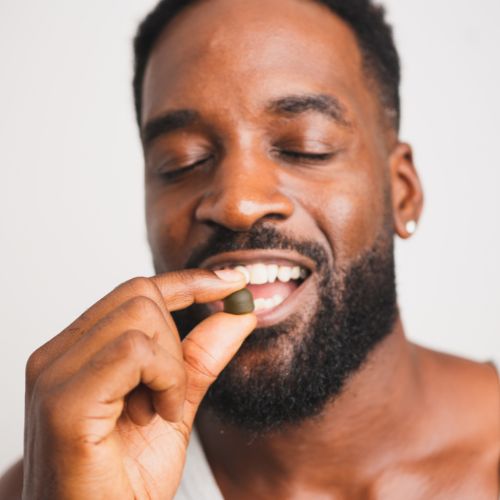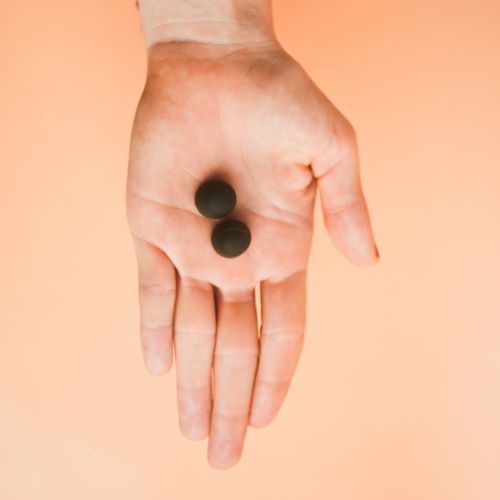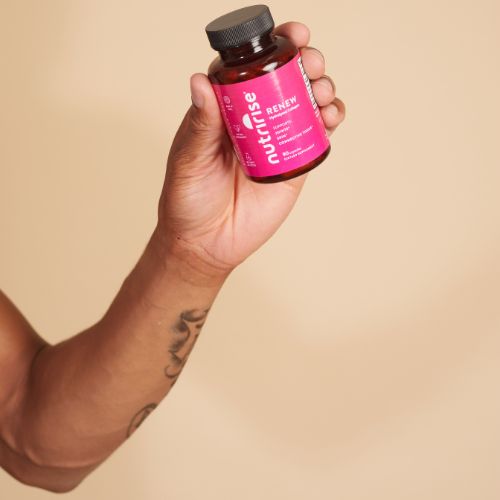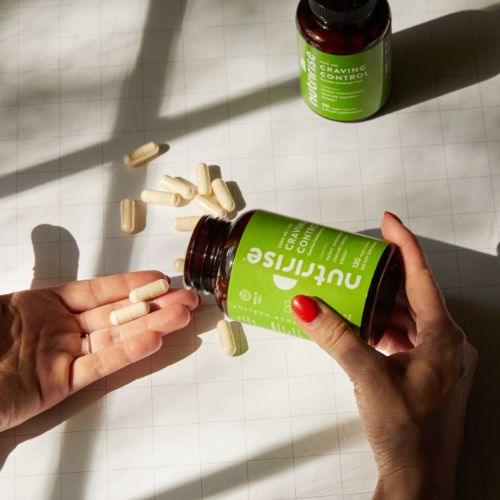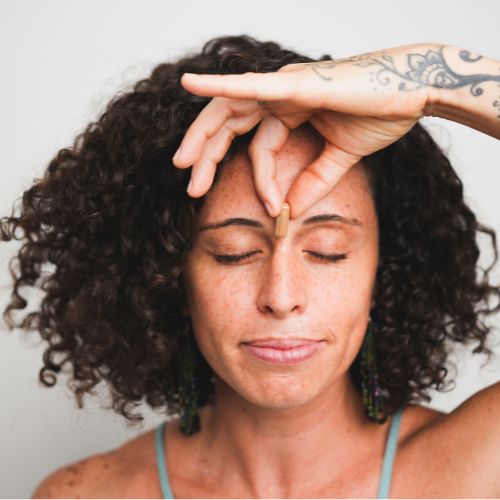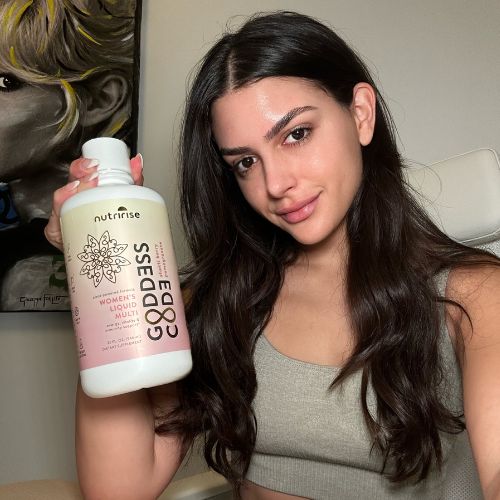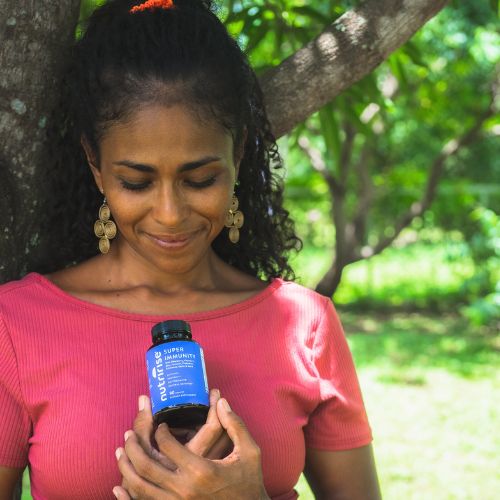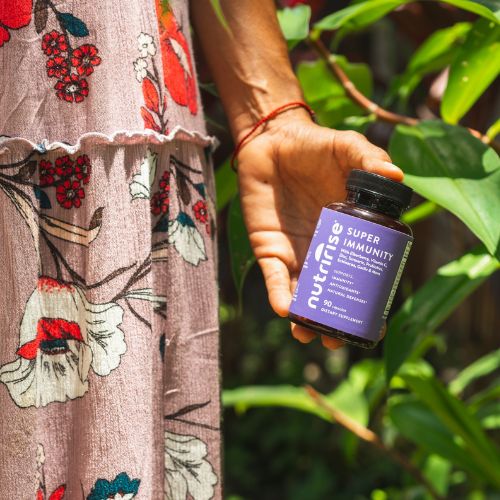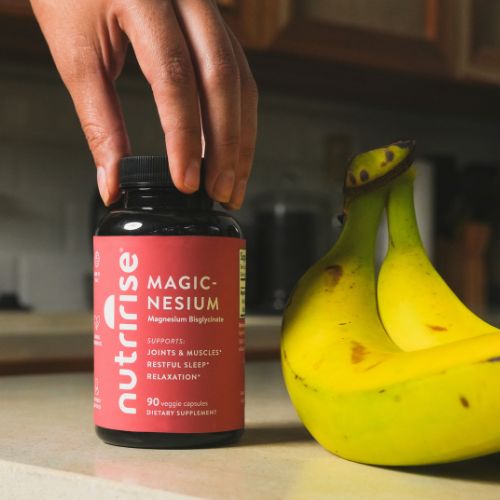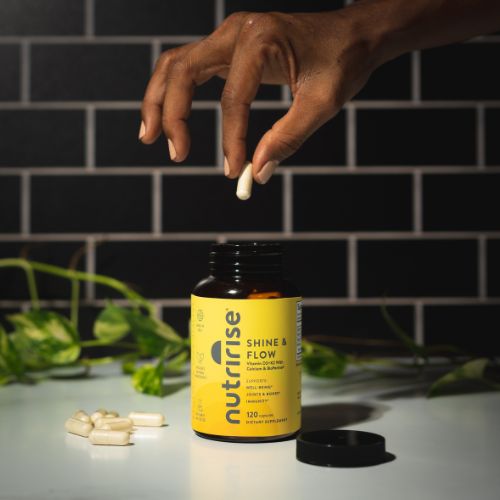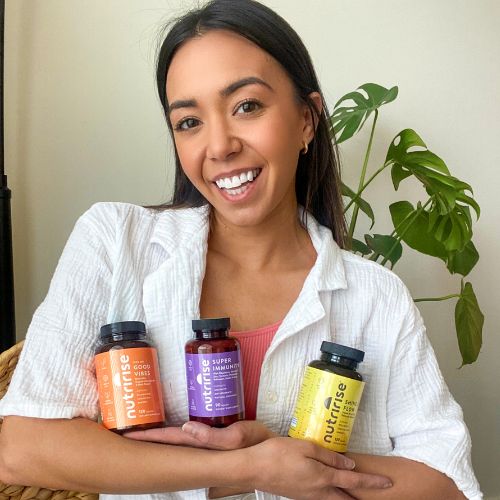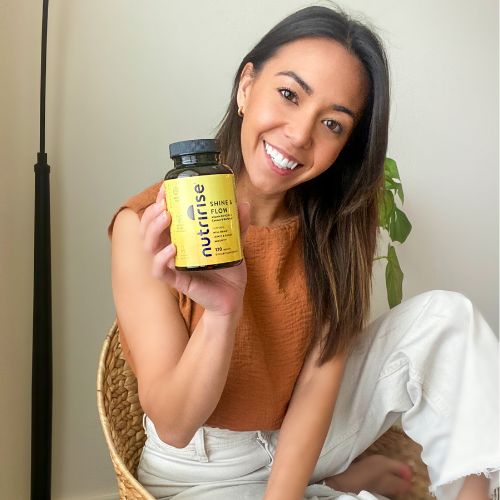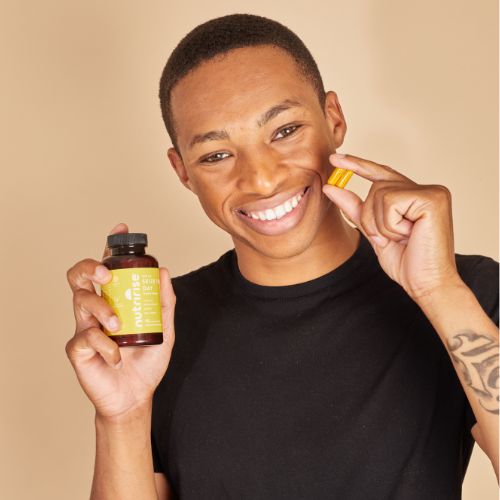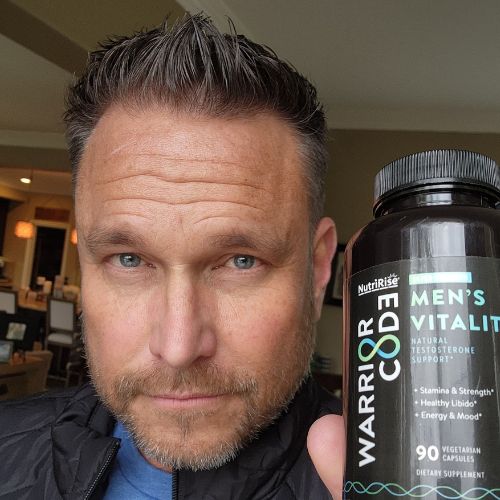Seasonal Affective Disorder, Explained
What Is Seasonal Affective Disorder (SAD)?
Let's dive in a little deeper into what's really happening in SAD. There are a few different hypotheses about what might cause winter SAD, such as neurotransmitters, hormones, changes in the circadian rhythm, genetics, and other psychological factors [2].
It's thought that people with SAD may have difficulty regulating the neurotransmitter (a chemical messenger in the brain) known as serotonin which is responsible for balancing our mood. For example, one study found that people with SAD had reduced serotonin levels during seasonal changes. They found increased levels of a protein called SERT, leading to alterations in how serotonin is transported in the brain. During the summertime, sunlight helps to keep SERT levels naturally lower [3].
Our bodies have what is known as the circadian rhythm, which is a series of internal processes involved in our sleep/wake cycle that repeats every 24 hours. You could think of it like your body's innate "clock." The circadian rhythm is mainly determined by how your body detects changes in light and dark. It's thought that people with SAD may have circadian rhythms that have difficulty adjusting to the changes in sunlight and shorter days during the cold months of the year [4].
Getting sun on our bare skin in winter can be tricky since we're all wrapped up in sweaters and scarves and spend most of our time inside keeping warm. This can put many people at risk for a deficiency in Vitamin D, also known as the "sunshine" vitamin. Vitamin D deficiency is linked to depressive symptoms due to its unique role in serotonin activity [5]. While there's no concrete evidence that Vitamin D levels play a role in SAD, researchers are investigating this connection since it seems like a logical theory.
Interestingly, some people are more at risk for developing SAD than others. For example, women are up to four times more likely to suffer from seasonal affective disorder than men. Usually, people living in northern latitudes farthest from the equator are more susceptible [6].
What Are The Symptoms Of SAD?
So, how do you know if you've got SAD? According to the Diagnostic and Statistical Manual of Mental Disorders, or the DSM-5 for short, someone with SAD must have a specific seasonal pattern of depression that begins and ends during the colder seasons each year for at least two years. People can experience SAD at any age, but it usually starts between 18 and 30 [3]. The most common symptoms of SAD typically include:
- Consistent feelings of sadness/depressed mood
- Fatigue or loss of energy even after a restorative sleep
- A loss of interest or pleasure in activities that were once enjoyed
- Changes in sleep patterns
- Difficulty concentrating - often referred to as "brain fog."
- Feeling worthless or hopeless
- Increased appetite & weight gain
- Substance abuse
- Thoughts about death or suicide
How Does SAD Differ From General Depression?
It's estimated that around 20% of Americans will have a significant depressive episode at some point [7]. While the symptoms of seasonal affective disorder and major depressive disorder are similar and at times can seem identical, the two shouldn't be confused! In people with SAD, their episodes of depression follow a particular pattern, while those suffering from major depressive disorder tend to have bouts of depression unrelated to seasonal changes. Weight gain may also be a more common symptom of SAD, as we can experience a higher appetite and more cravings for carbohydrates in the winter months [8]. Sometimes distinguishing between SAD and general depression can be a bit confusing, so it's essential to consult your doctor if you're experiencing changes in your mood to ensure you get the proper treatment and care.
Common Treatments For SAD

Any form of depression can leave one feeling hopeless, but the great news is that there IS help for those struggling with seasonal affective disorder. Let's take a look at some of the research-backed treatment options that are commonly used in the toolkit to support those with SAD:
Light Therapy
Since decreased daylight seems to play an essential role in the development of SAD, a lot of research has focused on exposing people to a bright artificial light called light therapy or "phototherapy."
Researchers think light therapy may help ease SAD by regulating the circadian rhythm (your body clock) and serotonin activity [9]. Usually, a special "lightbox" is used in the morning, around 20 times brighter than typical indoor light [3].
The person receiving the therapy will sit in front of this bright light for up to an hour at a time daily, as studies show that when patients with SAD are exposed to light therapy for 20-60 minutes, they see a significant and immediate effect on their mood [10].
While this may seem difficult if you've got a busy schedule, many people use light therapy while doing other tasks like reading or working at their desks to save time.
Also, light boxes filter out UV rays, so you won't be getting a tan while you're typing at your computer! While side effects are usually mild, some people may experience eye strain, headaches, unstable mood changes, and difficulty sleeping, which is why light therapy should always be monitored by a healthcare professional [11].
Counseling
Therapy offers a healing space to learn to manage our feelings and thoughts. Therefore, counseling or talk therapy can be a helpful tool to help support those with SAD.
A randomized controlled trial found that two 90-minute Cognitive Behavioural Therapy counseling sessions per week were as effective as 30 minutes of light therapy each morning. Showing positive mood changes in those with seasonal affective disorder [12].
Unfortunately, there is still some negative stigma around going to therapy, but remember, there is no shame in seeking support from a therapist if you're struggling with your mental health!
Antidepressants
As we touched on earlier, evidence suggests that SAD is linked to changes in the brain's serotonin activity, the mood-balancing neurotransmitter.
There is limited evidence to prove the efficacy of antidepressant medication in those struggling with seasonal affective disorder; however, research shows some really promising results.
For example, a placebo-controlled trial found that antidepressants known as "selective serotonin reuptake inhibitors" improved symptoms of depression in those with SAD and seemed to work the best in participants that were the most severely depressed [13].
What Supplements Might Help Improve SAD?

Vitamin D3
When researchers analyzed a series of clinical trials, they found that vitamin D deficiency and depression go hand-in-hand [14].
Since vitamin D is the "sunshine vitamin," low levels usually arise from not getting enough outdoor exposure to the sun. Lack of sunshine is a widespread issue today since our modern lifestyles generally mean we spend much of our time indoors!
There may be a link between Vitamin D deficiency and SAD since Vitamin D stores are typically depleted during the winter months as people get less exposure to sunlight [9].
With this link in mind, scientists researched whether Vitamin D supplementation might help people with SAD. A randomized controlled trial found that Vitamin D supplementation was associated with a significant improvement in depression scores in those with seasonal affective disorder.
If you have a Vitamin D deficiency, choosing the best quality Vitamin D supplement is essential since they aren't all created equal.
Vitamin D comes in two forms, known as D2 and D3. Vitamin D3 is significantly more absorbable and bioavailable, making it much more effective for getting Vitamin D levels up quickly if you are deficient. [15]. Vitamin D3 increases your calcium absorption. Vitamin K2 helps to direct this extra calcium to where it's supposed to go, like the bone matrix, which is why the best Vitamin D supplements also contain Vitamin K2 like NutriRise D3 + K2 Complex! [16]
B Vitamins
Vitamins B1, B3, B6, and B12 are essential for cognitive function, and deficiencies in some B vitamins have been linked to depression [17].
While there isn't enough evidence to conclude whether supplementing with B vitamins can help specifically with seasonal affective disorder, it is well known that B vitamins are needed to convert the protein you get in your diet into feel-good neurotransmitters like serotonin and dopamine [18].
Another way B vitamin supplementation might also improve your mental health is by alleviating stress. A randomized controlled trial found that when people took a B complex supplement for 90 days, they significantly reduced their stress levels and depressed mood [19].
Aside from supplementation, you can also focus on getting enough B vitamins through your diet.
The best food sources of B vitamins include:
- Meat & poultry
- Seafood
- Eggs
- Leafy green vegetables
- Seeds
- Legumes
- Whole grains like barley, brown rice & millet
Melatonin
Melatonin is a hormone produced in your brain's pineal gland and is essential for regulating the circadian rhythm, i.e., your wake and sleep cycles.
It's released in the evenings around bedtime when your cortisol level drops so that you start to feel tired and can get a good night's sleep.
Melatonin also seems to play an essential role in mood, so researchers have shown interest in its effect on depression [20].
A clinical trial found that disruptions in circadian rhythm are a significant part of seasonal affective disorder, so they tested the effect of melatonin supplementation in those diagnosed with SAD. At the end of the study, they found that taking melatonin helped to positively shift the circadian rhythm of those with SAD and improve depression symptoms [21].
It's important to note that the evidence is around melatonin supplements for SAD sufferers is still inconclusive, so if you're interested in trying a melatonin supplement, discuss this with your healthcare provider to ensure it's the correct route for you first!
Supplements That Might Enhance The Benefits of Antidepressants
Interestingly, some supplements might help boost the effectiveness of certain antidepressant medications.
For instance, omega 3 fatty acids seem to improve depressive symptoms by reducing inflammation and enhancing the effects of antidepressants, especially in those resistant to treatment [22].
Research also shows that improving folate and B12 levels in the body might also improve the outcome for those taking antidepressant medications! [23]
Extra Ways to Boost Your Mood
Physical Activity
We all know it can be hard to get up and get going when you're feeling down, but research shows that the medicine of movement can be so helpful for those suffering from depression [24].
Interestingly, both aerobic (e.g., running) and non-aerobic (e.g., weight lifting) forms of exercise reduce symptoms of general depression [25].
Although there are limited studies on increased activity on seasonal affective disorder specifically, some research has shown that exercise may have the same beneficial effect on seasonal winter depression as light therapy [26].
Don't feel intimidated - you don't have to run a marathon or join a CrossFit class to start seeing the benefits of movement!
Any physical activity can help and is better than nothing! Low impact aerobic activities can be a great place to begin, like going for a daily walk or dancing. You might also want to try:
- Yoga
- Swimming
- Jogging
- Hiking
- Strength training
- Tai Chi
Consistency is key to getting the most out of any exercise routine, but it can be challenging to stay motivated when you're not feeling yourself. Agreeing on an exercise routine with a friend can be a great way to stay on track and boost your mood through healthy social interaction and connection - it's a win-win!
Get this: a study found that those who exercised in groups showed significantly improved mental and physical well-being than those who exercised alone or not at all [27].
Socializing
As human beings, we have a profound need to connect with others. Research shows that positive social interactions and bonds are essential to our well-being and happiness [28].
This can be a catch 22 since SAD symptoms can make you feel unmotivated and less likely to socialize. However, it's vital to spend some time with friends and family to look after our mental health.
Hobbies & Doing Things You Enjoy
Leisure activities like hobbies give us the opportunity for health restoration and recovery from life's struggles and stressors. A common symptom of seasonal depression is losing interest in things that you once enjoyed, so you aren't alone if you're experiencing this.
Research shows that participating in hobbies and something that we enjoy doing can significantly impact both mental and physical well-being, even to the extent of reducing disease risk, enhancing longevity, and improving overall well-being [29].
Even if it's challenging to find the motivation at first, immersing yourself in some fun activities and hobbies (preferably with others!) can be worth it in the long run.
Self Care
- Self-care practices don't have to be luxurious or indulgent; sometimes, the best way to start is to ensure that you're meeting your basic needs like eating a nutrient-dense diet, getting 7-9 hours of sleep every night, and drinking plenty of water to stay properly hydrated. Try your best to maintain a consistent routine as much as you can!
- Self-compassion is another basic form of self-care. It can be easy to beat yourself up when you're feeling low, but if you wouldn't say something to a friend, try not to say it to yourself! Be mindful of the inner critic in your head, take a deep breath, and be kind to yourself instead.
- Setting healthy boundaries in your life is another way to take care of yourself. Perhaps you need to set boundaries in some of your relationships or workplace to avoid burnout and over-extending yourself.
Final Thoughts
It can feel really isolating and scary to suffer from seasonal affective disorder, but there is hope! Don't suffer in silence. If you notice the clouds roll in on your mood during seasonal change, especially approaching winter, seek help from your primary healthcare provider. Family physicians are an excellent first port of call if you suspect a mood disorder.
Lastly, let's take a look at what you learned today:
- Seasonal affective disorder (SAD) affects 5-6% of the American population.
- SAD usually occurs in the winter and usually affects people in the US most drastically in January and February.
- SAD may occur due to neurotransmitter activity, serotonin levels, and circadian rhythm changes.
- Genetics, being female and living in the northern hemisphere may increase the risk of SAD.
- Common treatments for SAD include light therapy, antidepressants, and cognitive-behavioral therapy.
- Supplements that may help support symptoms of depression include vitamin D, B vitamins, melatonin, and omega 3 fatty acids.
- Other great ways to boost mood include: exercise, hobbies, meaningful social interactions, and self-care strategies like routines, sleep, and eating well.
Note: This article is for informational purposes only and not intended for use as medical advice. Always consult your healthcare provider before starting any dietary supplement.











